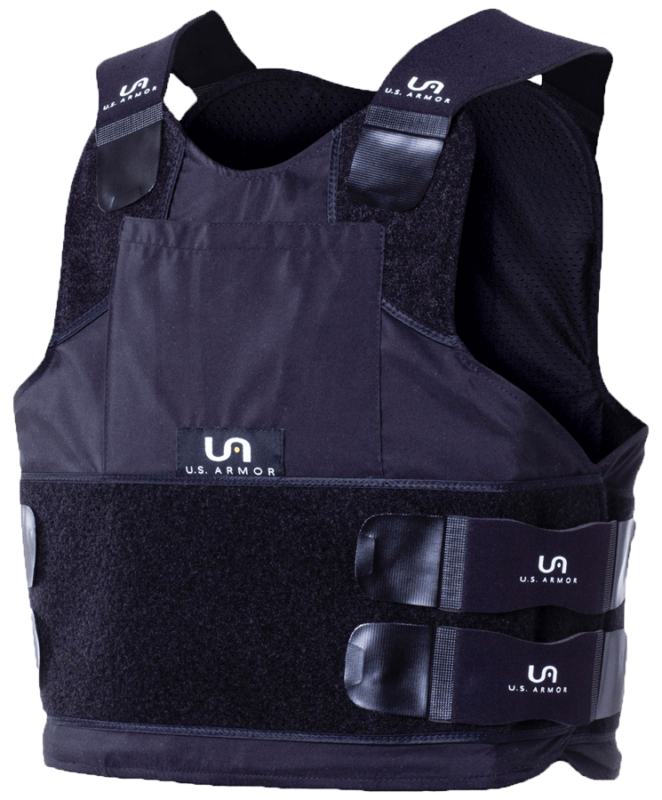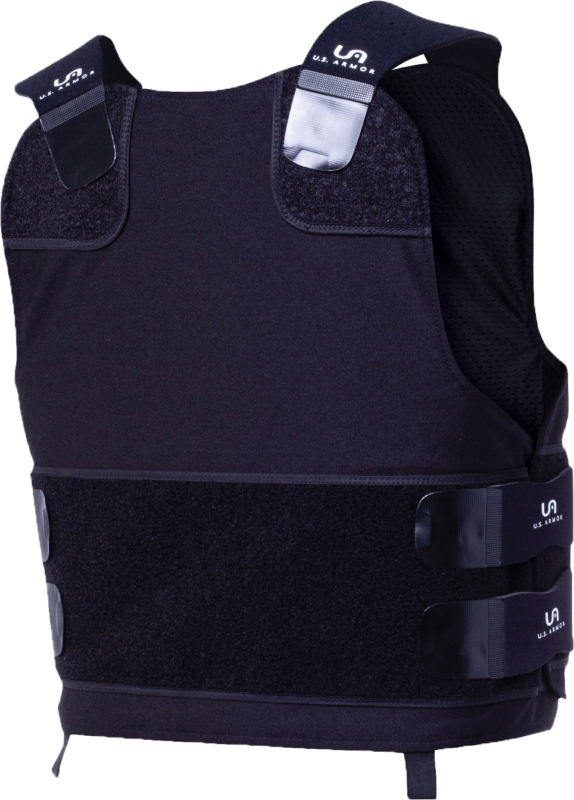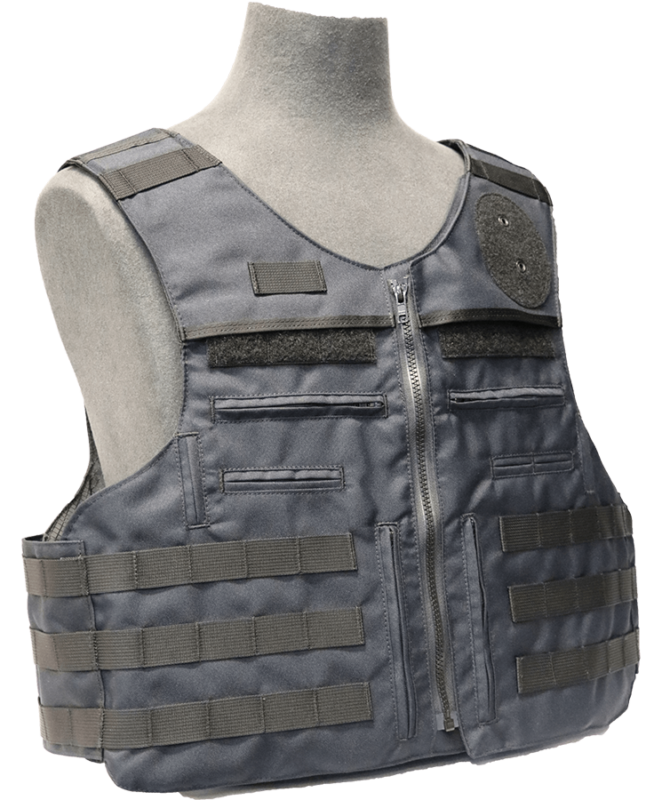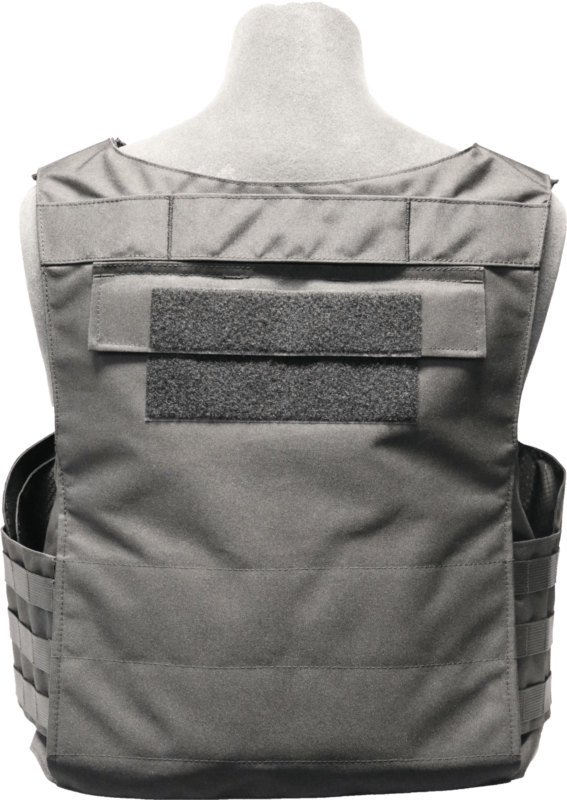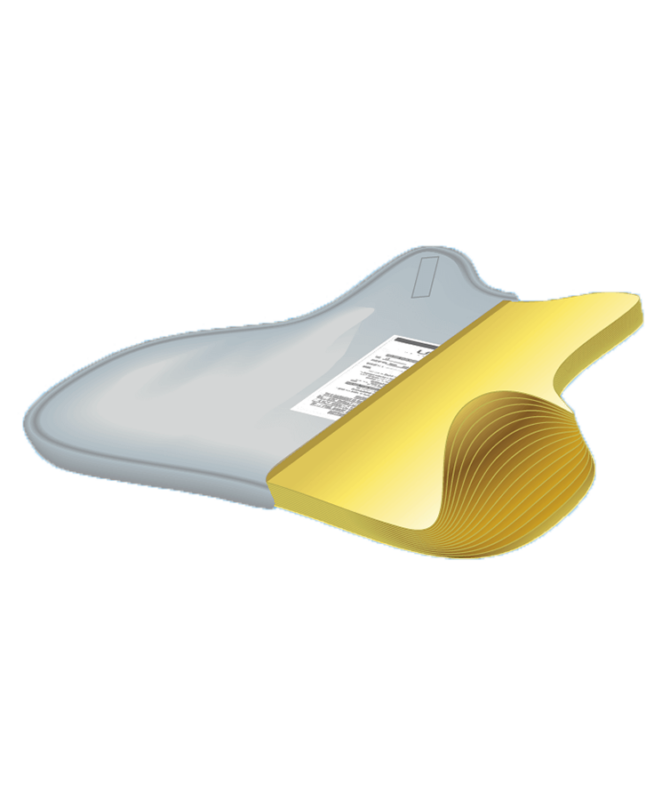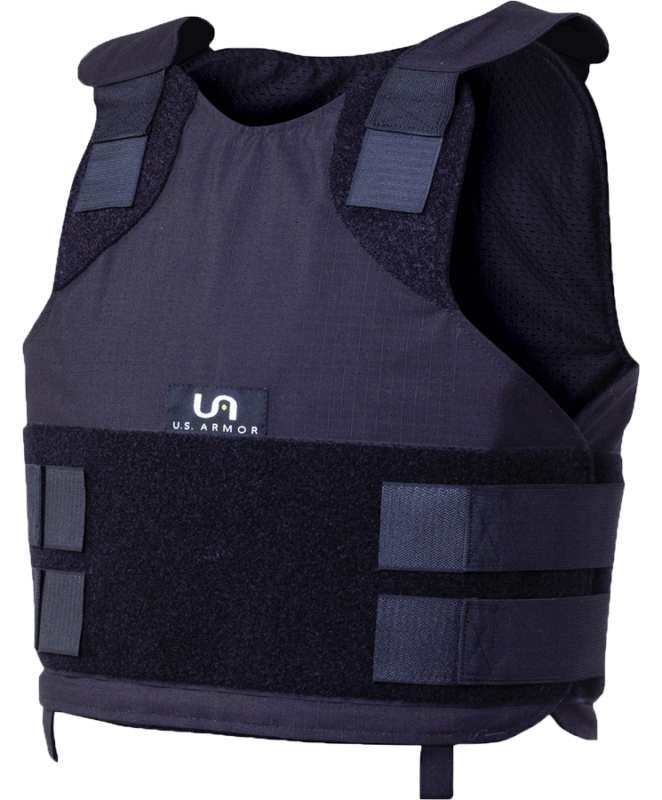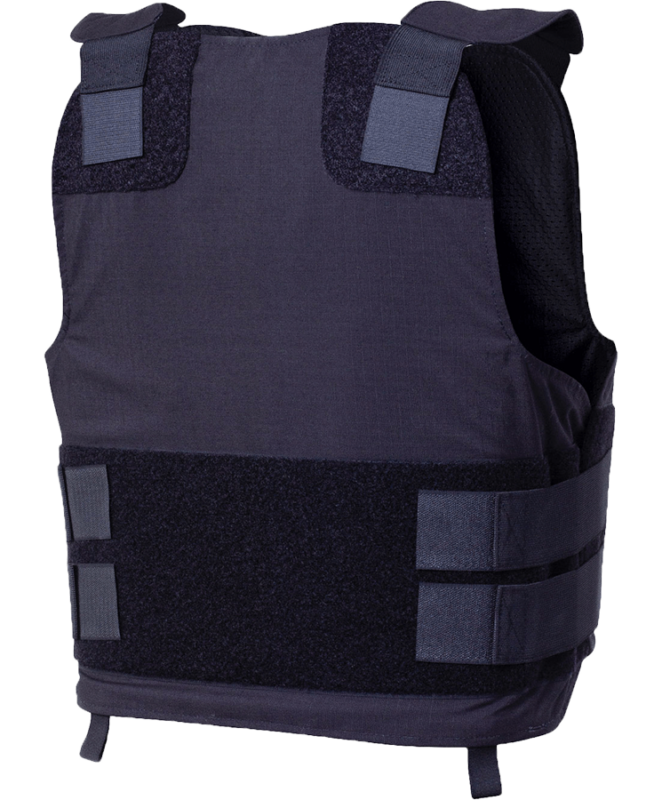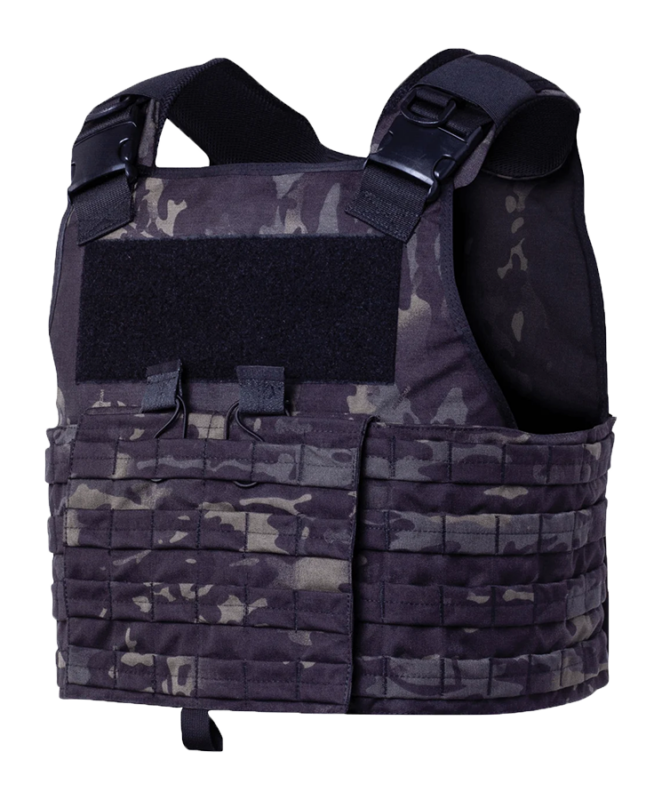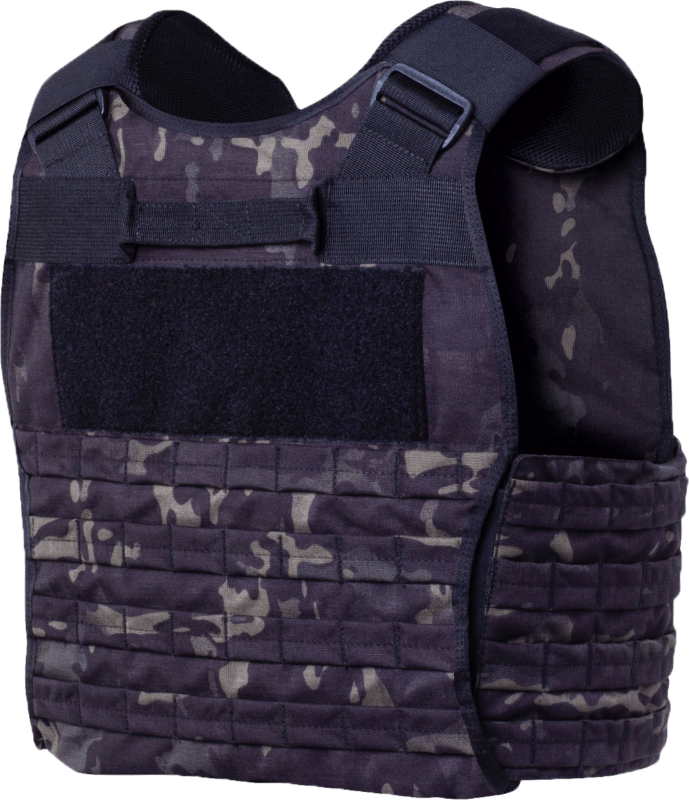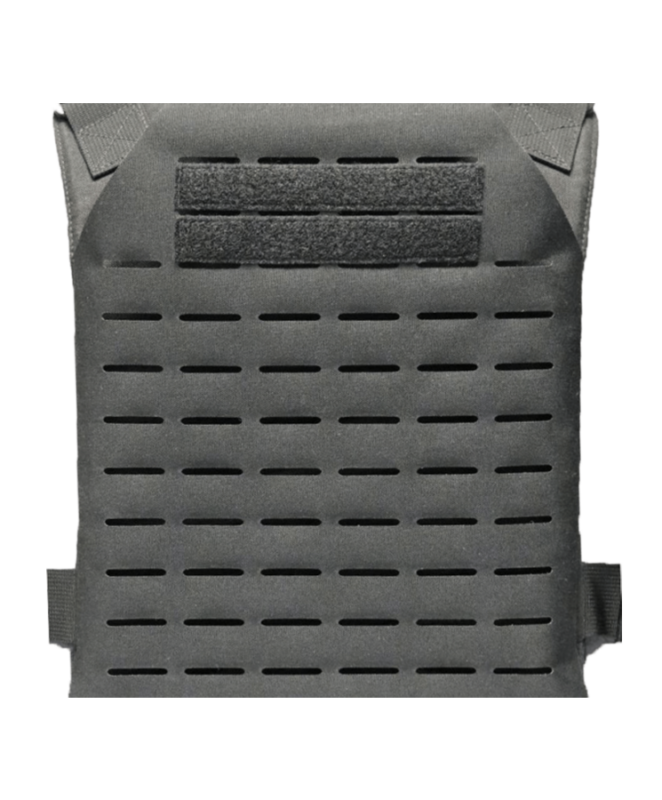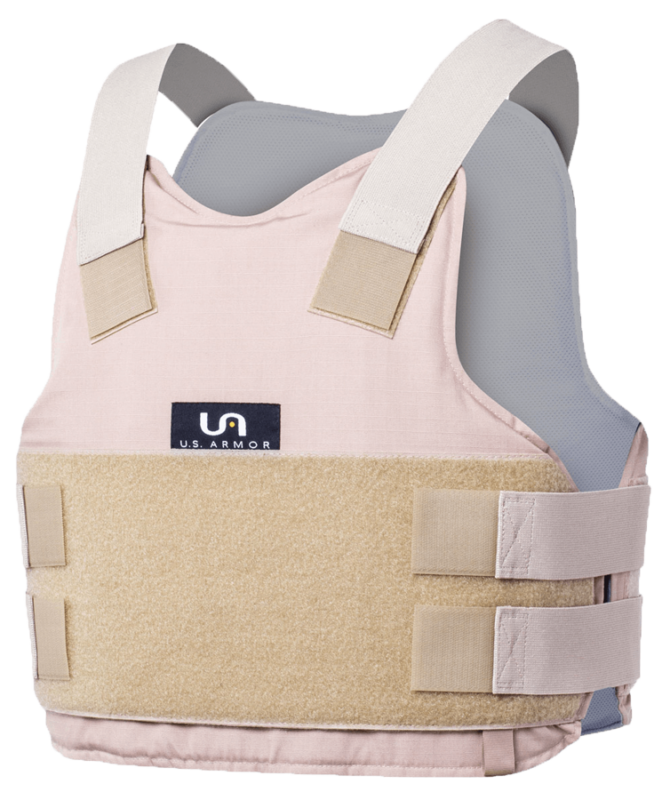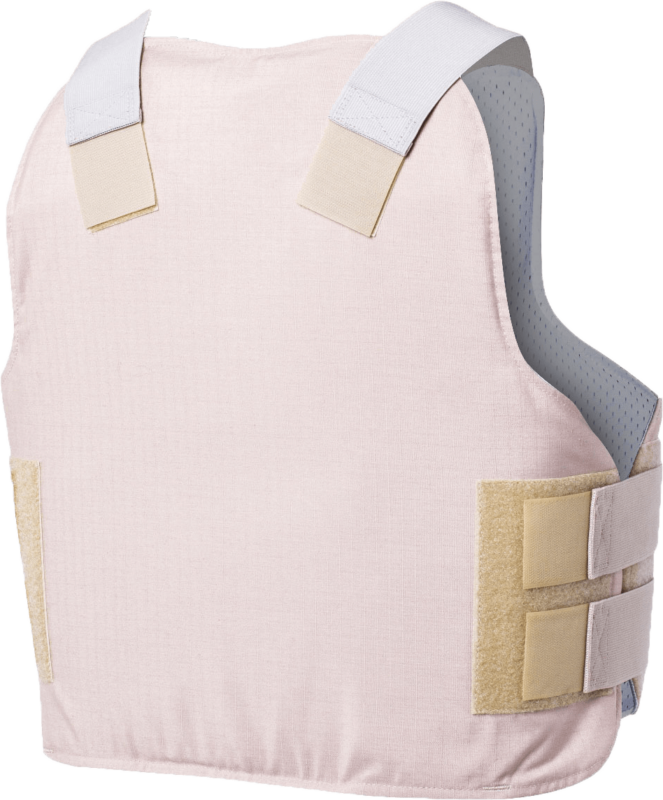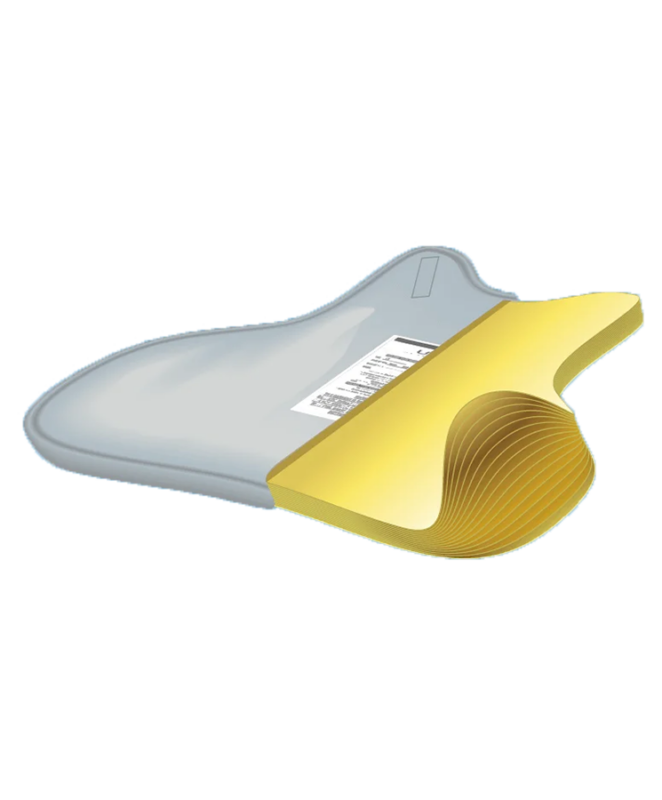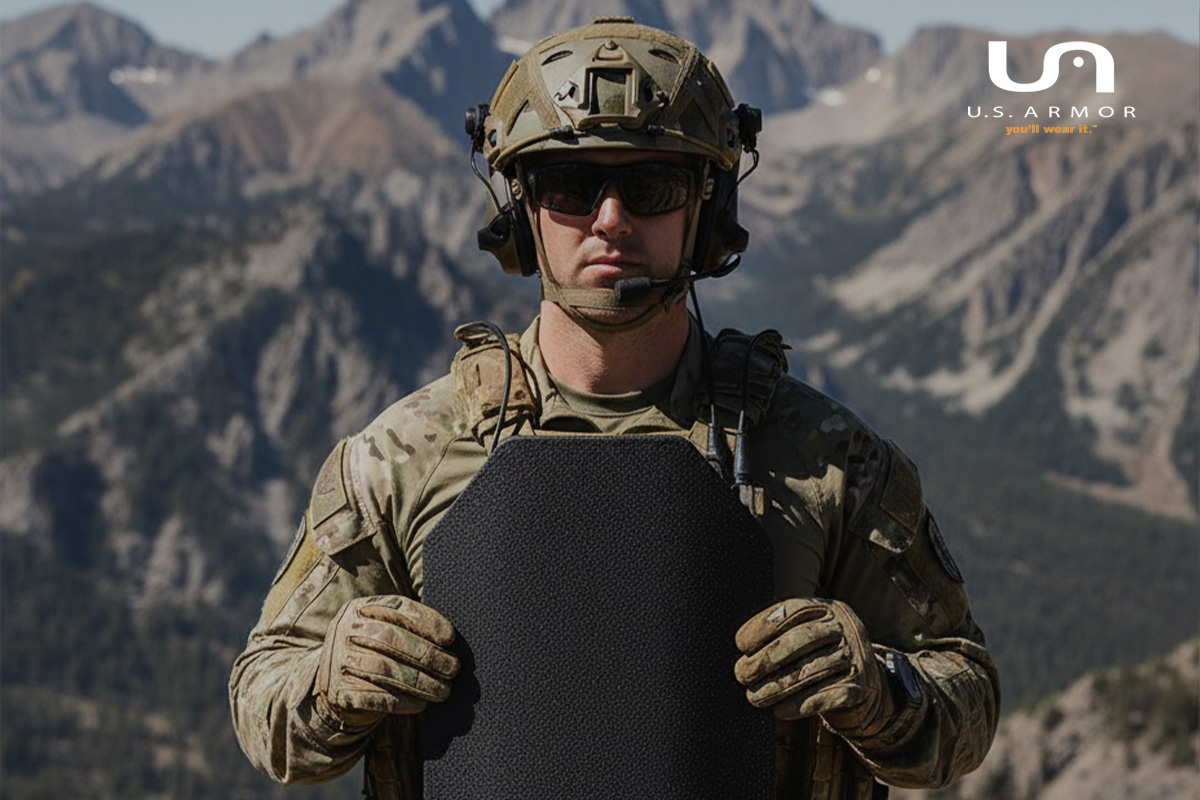Professional Guide to Wearing Body Armor: Expert Insights for Your Protection
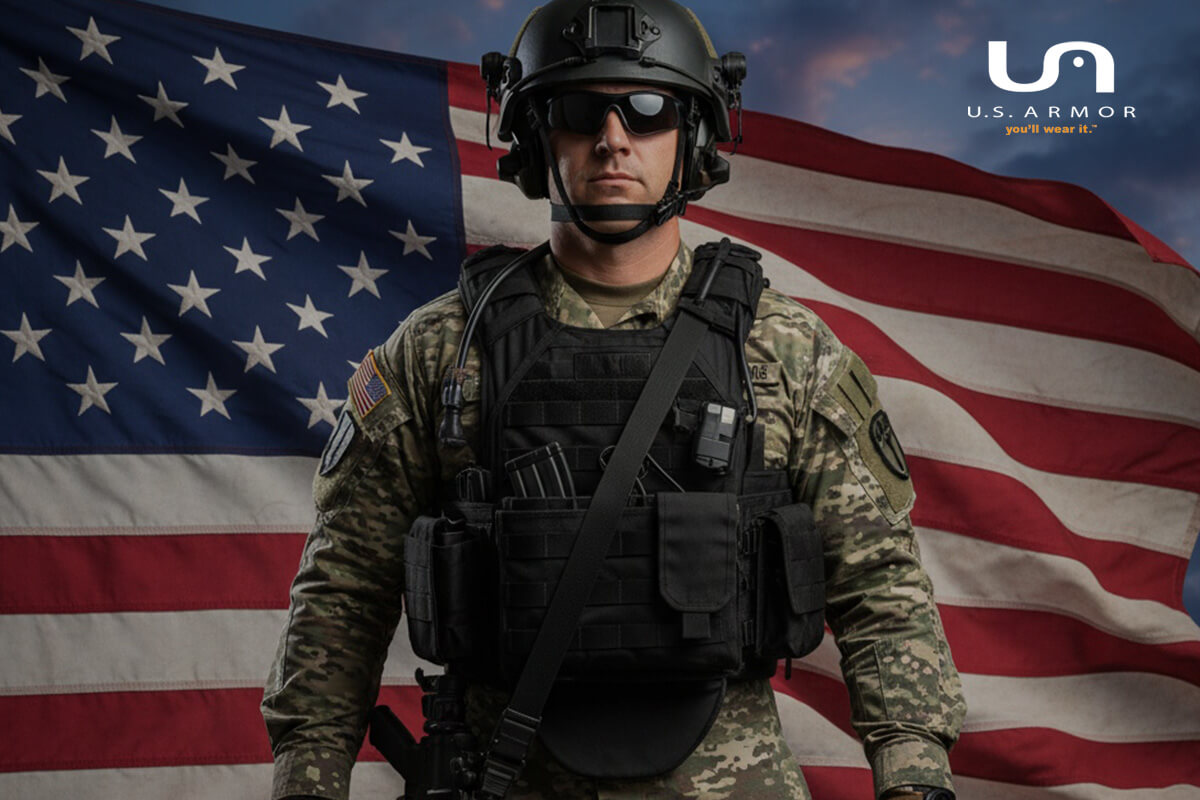
For 38 years, U.S. Armor Corporation has been a leader in designing, manufacturing, and delivering body armor and ballistic protection solutions. Since our founding in 1986, we have partnered with law enforcement agencies, military units, and security professionals, guiding them on how to wear body armor, receiving feedback from those in the field—saving hundreds of lives through superior materials, precise fit, and rigorous testing. Our armor has been worn by officers under fire, deployed in combat zones, and trusted in operations where failure is not an option.
If you’re a patrol officer, a tactical unit member, private security professional, or even a civilian preparing for uncertain threats, you’ll benefit from our expert insights into correct fit, comfort, threat assessment, and selection. Before learning how to wear body armor, make sure you understand the different types in our body armor guide.
We go beyond theory. We draw on U.S. Armor’s internal resources—our body armor guide, measurement and sizing tools, customer data, partnerships, and the fit guarantee—and on tested product examples like the ACS-EXP Concealable Body Armor, FOC-BOT Outer Vest Carrier, and other systems built to optimize comfort and protection. We’ll walk through how armor should sit on your torso, how to adjust for your body type, mobility issues, and how to wear it in varying climates or missions.
By the end of this professional guide, you’ll understand not just which armor to buy, but precisely how to wear it so it protects you when it matters most. You’ll also have criteria to assess fit, comfort, gear integration, and when to replace or upgrade. Let’s get started.
Professional Fit and Sizing Guide
Proper fit is the foundation of effective body armor. Even the highest-rated vest is ineffective if worn incorrectly. Here’s how to ensure proper body armor fit and how to measure:
Measurement Techniques for Different Body Types
- Chest (or bust) circumference: Measure around the widest part of the chest, typically just under the armpits.
- Waist / Torso length: Measure from the top of the sternum (just below the throat) down to about 1-inch above the navel. Also measure back height: from the base of the neck (top of the trapezius) down to the belt line.
- Side-to-side width: Panels should not extend into the armpits or underarm excessively, which restricts arm movement.
- Front panel height: From just below the throat to just above the belt-line or waist. Back panel similarly from shoulder blades down.
U.S. Armor provides measurement forms and sizing charts to ensure a tailored fit.
How Armor Should Sit on Torso for Maximum Protection
- The front top of vest should cover the sternum without impeding neck movement.
- Side panels should wrap enough to protect ribs and flank, but must not interfere with arms or cause pinching.
- Bottom edge should sit above hip bones to avoid riding up during movement.
- Back panel height should cover spare vital organs.
Mobility Considerations for Different Activities
- If you’re frequently raising arms (e.g. for building entry, vehicle roof operations), ensure side panels do not restrict upward motion.
- For bending, crouching, running—flexibility in the vest carrier and panel construction matters. Soft armor and lighter carriers like U.S. Armor’s ACS-EXP Concealable Body Armor or FOC-BOT Outer Vest Carrier are built to allow better flexibility.
ACS-EXP Concealable Body Armor
$0.00The removable ACS-EXP machine washable carrier is constructed of anti-microbial, closed-hole mesh fabric with built in two way stretch on the exterior half of the carrier and moisture wicking (Wikaway) mesh on body side to allow for air flow and evaporation. The carrier is removable from the ballistic panels for laundering. Comfort-Curve ventilated shoulder straps using Breath-O-Prene conform to the natural shoulder shape. The additional width and two-way stretch of the Comfort-Curve shoulder strap system allows for enhanced weight distribution and comfort. The Breath-O-Prene straps are removable; our QC Strap System allows for ease of replacement by an individual, in the event of wear or fatigue.
Whether you’re in tactical operations, law enforcement missions, or personal defense scenarios, this product delivers the strength and protection you need. The ACS-EXP Concealable Body Armor is lightweight yet rugged, ensuring prolonged wearability while maintaining peak performance. Engineered to meet the highest industry standards, it is the go-to choice for professionals who demand excellence in protective gear. Stay prepared and secure with the ACS-EXP Concealable Body Armor, your ultimate safeguard against evolving threats.
Comfort Optimization for Extended Wear
- Use carriers that include ventilation mesh, moisture‐wicking liners. U.S. Armor’s soft armor panels often come with carriers having moisture-wicking (Wikaway) mesh on the body side and breathable padded straps (e.g., Breath-O-Prene, Comfort-Curve shoulder straps)
- Ensure ease of removal for breaks: front opening carriers like the FOC-BOT Front Opening Carrier allow don/doff without removing outer layers
FOC-BOT Front Opening Carrier
$0.00The FOC-BOT Front Opening Carrier is designed for superior protection and reliability, making it an essential piece of gear for law enforcement, military personnel, and security professionals. Built with high-quality materials and advanced engineering, it provides optimal safety without compromising comfort or mobility. Our FOC-BOT Outer Vest Carrier offers the versatility of being a front opening vest while providing you maximum protection without the discomfort and bulk of front opening vest panels. Easy on and off allows you to quickly and easily get your body armor on or off. Custom sized to fit your new or existing U.S. Armor ballistic panels.
Whether you’re in tactical operations, law enforcement missions, or personal defense scenarios, this product delivers the strength and protection you need. The FOC-BOT Front Opening Outer Vest Carrier is lightweight yet rugged, ensuring prolonged wearability while maintaining peak performance. Engineered to meet the highest industry standards, it is the go-to choice for professionals who demand excellence in protective gear. Stay prepared and secure with the FOC-BOT Front Opening Carrier, your ultimate safeguard against evolving threats.
Gender-Specific Fitting Considerations
- U.S. Armor offers some sizing options for different body shapes to avoid pressure over sensitive areas. Soft armor panels and concealable carriers often come in cuts designed for female wearers or more rounded body types.
- Ensure panel width doesn’t compress the bust in women; females may benefit from adjustable side straps and well-designed contouring.
Enforcer XLT Female Model XLT3AF – NIJ 0101.04/.05 – Level IIIA
$0.00The Enforcer XLT was originally developed for the U.S. Border Patrol who required Threat Level IIIA armor that still enabled them to perform their duties while working long hours in extreme heat. Finally, you don’t have to sacrifice comfort for dependable protection with enhanced heat management. Comfort is the difference. Kevlar® Comfort XLT is a proven ballistic technology from DuPont. The state-of-the-art weave and spinning technique allow this version of Kevlar to be more comfortable, flexible and lighter yet still deliver the same ballistic performance and stopping power as previous, heavier blends of DuPont Kevlar.
The Enforcer-XLT-Female-Model-XLT3AF-Level-IIIA-nij-05 is designed for superior protection and reliability, making it an essential piece of gear for law enforcement, military personnel, and security professionals. Built with high-quality materials and advanced engineering, it provides optimal safety without compromising comfort or mobility. With a focus on durability, the Enforcer-XLT-Female-Model-XLT3AF-Level-IIIA-nij-05 offers enhanced resistance against impact and ballistic threats, ensuring maximum defense in high-risk situations.
Tactical Application Scenarios
Next, applying fit and wear in different real-world scenarios: law enforcement, military/security, and civilian. Understanding where to wear bulletproof vest differs by role and context.
Law Enforcement Applications
- Officers on patrol often wear vests under jackets or shirts. Concealable soft armor (NIJ Levels IIA, II, or IIIA) is ideal. Carriers like U.S. Armor’s ACS-EXP Concealable Body Armor balance protection with minimal bulk.
- Shoulder strap design (Comfort-Curve with breathable padding) reduces fatigue during long shifts. Ōne should ensure straps distribute weight-evenly and that waist belts/cummerbunds fit snugly but not restrict breathing.
Tactical Operations and Gear Integration
- High-threat operations (SWAT, warrant service) require carriers that can accommodate hard plates (front/back), side panels, and load-bearing accessories. Carriers like MSTV-G2 Modular Tactical Vest from U.S. Armor allow removable ballistic panels and plate pockets.
- Mobility is essential: ensure vest does not snag or interfere with body armor, side arms, belts, or radio equipment. Adjust cummerbunds and side panels precisely.
MSTV G2 – Mission Specific Tactical Vest
$0.00The MSTV G2 is the ultimate outer enhancement to the conventional concealable armor that the first responder is already wearing under their uniform. It achieves the elusive balance between the competing demands of adequate protection and increased mobility through customizable configurations. In addition, the MSTV-G2-Mission-Specific-Tactical-Vest offers a fully modular tactical armor package, where each ballistic panel is removable ensuring complete flexibility for the operator, based on ever-changing situational demands. Front, rear and side plate pockets allow additional protection. The MSTV-G2-Mission-Specific-Tactical-Vest is designed for superior protection and reliability, making it an essential piece of gear for law enforcement, military personnel, and security professionals. Built with high-quality materials and advanced engineering, it provides optimal safety without compromising comfort or mobility.
With a focus on durability, the mstv-g2—mission-specific-tactical-vest offers enhanced resistance against impact and ballistic threats, ensuring maximum defense in high-risk situations. Whether you’re in tactical operations, law enforcement missions, or personal defense scenarios, this product delivers the strength and protection you need. The mstv-g2—mission-specific-tactical-vest is lightweight yet rugged, ensuring prolonged wearability while maintaining peak performance. Engineered to meet the highest industry standards, it is the go-to choice for professionals who demand excellence in protective gear. Stay prepared and secure with the MSTV-G2-Mission-Specific-Tactical-Vest, your ultimate safeguard against evolving threats.
Court Appearances and Concealment
- For undercover or court appearances, the vest must be invisible beneath jackets or shirts. Concealable armor must sit close to body, avoid protruding edges, and maintain posture so it’s not obvious.
- Use low bulk carriers, slim panels, and ensure bulletproof vest does not shift while sitting or leaning.
HVC Concealable Body Armor
$0.00The HVC concealable body armor is constructed of Poly/Cotton Ripstop. On the body side there is Wikaway moisture-wicking mesh to allow for air flow between the carrier and the wearer allowing more comfort to the wearer. The vest carrier is removable from the ballistic panels for laundering. Comfort-Curve ventilated shoulder straps using Breath-O-Prene conform to the natural shoulder shape. The additional width and two-way stretch of the Comfort-Curve shoulder strap system allows for enhanced weight distribution and comfort. The Breath-O-Prene straps are removable; our QC Strap System allows for ease of replacement by an individual, in the event of wear or fatigue.
Whether you’re in tactical operations, law enforcement missions, or personal defense scenarios, this product delivers the strength and protection you need. The HVC Concealable Body Armor is lightweight yet rugged, ensuring prolonged wearability while maintaining peak performance. Engineered to meet the highest industry standards, it is the go-to choice for professionals who demand excellence in protective gear. Stay prepared and secure with the HVC Concealable Body Armor, your ultimate safeguard against evolving threats.
Off-Duty Protection Strategies
- Keeping soft armor in a discreet carrier, possibly in a backpack or car, should it be needed off-duty. Always check “where to wear bulletproof vest” instructions—on torso front & back, not just carried.
Military / Security Applications
- Hot, humid climates (jungle, desert) increase sweat, heat burden. Armor worn with minimal thermal layers, using moisture wicking carriers, and ventilation.
- Cold weather may require layering over armor; ensure armor still covers the chest properly when wearing coats or body warmers.
Gear Compatibility and Load Distribution
- Load carriage (backpacks, weapon slings) must work in concert with armor. Hard plates add weight; high-cut front/back plates, side plates as needed. U.S. Armor’s plate carriers (ERPC-G2 Extended Rifle Plate Carrier, etc.) are designed for this.
- Straps, cummerbunds, carriers should allow adjustment under load. Shoulder & waist-belt fit critical.
ERPC G2 – Extended Rifle Plate Carrier
$0.00Designed to be worn in conjunction with an officer’s concealable soft body armor in a first responder situation or extended deployment. The ERPC-G2-Extended-Rifle-Plate-Carrier can be worn over top of the officer’s soft body armor protection in order to provide a higher level of protection in the event of an active shooter situation or when responding into a high threat environment. The ERPC-G2-Extended-Rifle-Plate-Carrier can be fitted with full size NIJ Certified IIIA Ballistic panels (front/back and sides) creating a “Stand Alone” IIIA tactical vest platform to build upon. The ERPC G2 can also be fitted with Threat Level IIIA Ballistic inserts that also provide “stand alone” IIIA ballistic protection level or additional protection when used behind a Rifle Plate.
The ERPC-G2-Extended-Rifle-Plate-Carrier is designed for superior protection and reliability, making it an essential piece of gear for law enforcement, military personnel, and security professionals. Built with high-quality materials and advanced engineering, it provides optimal safety without compromising comfort or mobility. With a focus on durability, the erpc-g2—extended-rifle-plate-carrier offers enhanced resistance against impact and ballistic threats, ensuring maximum defense in high-risk situations. Whether you’re in tactical operations, law enforcement missions, or personal defense scenarios, this product delivers the strength and protection you need.
Climate Adaptation Strategies
- Use carriers with removable ballistic panels so you can wash the carrier (mesh/liners) to reduce odor and maintain hygiene (important in field). U.S. Armor’s concealable carriers have removable panels & washable carriers
- Avoid storing armor wet; rotate usage so panels dry properly; avoid sun exposure which degrades fibers.
Mission-Specific Armor Selection
- For high-threat combat or tactical missions: prefer soft armor plus hard rifle plates (Level III or IV).
- For security duty: soft armor that stops handguns may suffice, with hard plates as optional.
LPC – Lightweight Plate Carrier
$0.00The smallest and lightest Rifle Plate Carrier in the U.S. Armor tactical line. The LPC is designed as a throw-over Rifle Plate carrier, which is worn in conjunction with an officer’s concealable soft body armor for instant deployment in a first responder situation. The RPC is worn over the top of an officer’s concealable body armor to provide a higher level of threat protection in the event of an active shooter situation or in rapid response to high threat environments. The LPC-Lightweight-Plate-Carrier is designed for superior protection and reliability, making it an essential piece of gear for law enforcement, military personnel, and security professionals. Built with high-quality materials and advanced engineering, it provides optimal safety without compromising comfort or mobility.
With a focus on durability, the LPC-Lightweight-Plate-Carrier offers enhanced resistance against impact and ballistic threats, ensuring maximum defense in high-risk situations. Whether you’re in tactical operations, law enforcement missions, or personal defense scenarios, this product delivers the strength and protection you need. The LPC-Lightweight-Plate-Carrier is lightweight yet rugged, ensuring prolonged wearability while maintaining peak performance. Engineered to meet the highest industry standards, it is the go-to choice for professionals who demand excellence in protective gear. Stay prepared and secure with the LPC – Lightweight Plate Carrier, your ultimate safeguard against evolving threats.
Civilian Protection Scenarios
- If working in armored transport, jewelry escort, or security for high-risk assets, soft armor (Level IIIA) with optional hard plates is recommended. Conspicuous carrier if needed, but often better with concealed carriers during non-deployment.
Personal Protection and Threat Assessment
- Determine likely threats: handgun vs rifle, proximity, environment. If in area with elevated threats, plan for hard plates front & back.
- Test sitting, driving positions with vest on to ensure coverage when bending or seated.
Travel Security Considerations
- When traveling in regions with high risk, travel-friendly armor (concealable carriers, lighter coats) matters. Also consider airport and local laws where wearing body armor may be illegal.
Home Defense Applications
- Having armor stored ready might help in emergencies—but ensure fit on torso, not just stored.
- If worn indoors, ensure mobility to move through tight spaces, stairs, doorframes.
Advanced Comfort and Performance Optimization
Comfort is as vital as protection in ensuring body armor is worn properly and consistently. Here are best practices:
Moisture Management & Climate Considerations
- Carriers with moisture-wicking fabrics on the inner liner; use mesh backing for airflow. U.S. Armor’s concealable soft armor carriers often use “Wikaway mesh” and closed-hole mesh fabrics to improve evaporation.
- Under-garment selection: moisture-wicking shirts to prevent sweat buildup. Avoid cotton that holds moisture.
Layering Strategies for Different Seasons
- Warm climates: wear minimal layers under armor; carriers made with breathable strap systems (e.g. Comfort-Curve) to reduce heat.
- Cold climates: ensure added layers do not push armor out of position—test with coat on.
- Rain: avoid letting armor panels get wet. Use waterproof outer layers but ensure ventilation to prevent condensation.
Movement and Flexibility Optimization
- Adjust side panels so bending, crouching, raising arms is possible without tugging or leaving gaps.
- Use carriers with stretchable cummerbunds or elastic side components.
- Weight distribution: widen shoulder straps, use carriers that distribute weight to shoulders and waist to reduce strain.
Long-Term Wear Comfort Techniques
- Use inserts or padding in shoulder straps to reduce rubbing.
- Periodically remove armor for breaks; loosen straps when possible without compromising safety.
- Maintain posture: armor should allow upright posture; if armor causes forward tilt, adjust straps, or consider lighter panels.
Maintenance While Wearing (Cleaning, Adjustments)
- After sweaty or heavy wear, remove panels and wash carrier portion only (machine washable carriers if specified). U.S. Armor’s carriers often have removable ballistic panels so the carrier can be washed.
- Inspect straps, buckles, hook & loop closures regularly.
- Make micro-adjustments after 1-2 wears to suit your gait or activity.
Professional Selection Criteria
Choosing the right armor means assessing threats, matching protection levels, and considering quality, cost, integration, and when to replace.
Threat Assessment and Armor Level Selection
- Soft Armor Levels (IIA, II, IIIA): For protecting against common handguns—9mm, .40, .45, .357, etc. Use soft armor for concealed, patrol or daily wear.
- Hard Armor Plates (Level III, IV): Required when rifle rounds (5.56, 7.62mm, or armor-piercing) are a serious threat. Use in carriers that allow front/back/side plate pockets.
- Determine the most likely threats for your role and environment, and ensure your vest rating matches or exceeds them.
Quality Indicators and Manufacturing Standards
- NIJ certification: ensure vest has NIJ 0101.06 (or current) certification. U.S. Armor’s guide emphasizes that all their armor is certified to meet NIJ standards.
- 60-Day Fit Guarantee (U.S. Armor): assurance that fit will be acceptable or replaced/adjusted.
- Materials for carriers: quality fabrics, antimicrobial liners, durable straps (e.g. Breath-O-Prene, widened Comfort-Curve straps).
Cost-Benefit Analysis for Different Use Cases
- Cost of soft armor vs hard plates: soft is lighter, often cheaper, but limited against rifle threats. Hard plates cost more, weigh more, but offer greater protection.
- Consider long term savings: durable carriers, replaceable panels, warranty, and care reduce lifetime cost.
Integration with Other Protective Equipment
- Carriers must work with load-bearing gear, duty belts, plate carriers, helmets. Overlap issues: ensure no gap when wearing plate carrier or backpack.
- Integration with communication gear, shields, etc.
Replacement and Upgrade Timing
- Armor should be replaced if hit by a bullet even if no visible damage.
- Manufacturers such as U.S. Armor recommend a service life for soft armor of about 5-7 years, hard plates may last longer (depending on material) but still subject to environmental and damage factors.
- Monitor wear signs: frayed edges, delamination, loss of flexibility.
Expert Insights for Your Protection
Correct fit and comfort aren’t just nice-to-have — they’re mission critical. If you’re wondering how to wear body armor, where to wear a bulletproof vest, or how to optimize your setup year-round, these tips will keep you protected and comfortable.
Seasonal Wearing Tips
- Summer Considerations:
- Choose carriers with moisture-wicking liners and breathable mesh panels to manage sweat and heat.
- Wear a thin, moisture-wicking base layer (avoid cotton) to reduce chafing.
- Allow armor to fully air-dry between shifts to prevent odor buildup and material degradation.
- Winter Considerations:
- Layer under your vest, not over — adding bulk underneath can shift armor out of position.
- Test your vest fit while wearing your full winter gear (jackets, duty belts) to ensure coverage isn’t compromised.
- Avoid overheating: ventilate whenever possible to prevent sweat from soaking panels in cold conditions.
Get Your Fit Right
Proper measurement is the foundation of proper body armor fit. Your vest should sit just below the collarbone, wrap securely around the torso without pinching underarms, and rest above the waistline to prevent ride-up while sitting or bending.
Not sure about sizing? Contact us for sizing guide to access U.S. Armor’s professional measurement tools, sizing charts, and 60-Day Fit Guarantee.
ACS-EXP Concealable Body Armor
BSII+2 Multi Threat Vest (NIJ .05)
Enforcer 3000 Series Model 3316 – NIJ 0101.06 – Level IIIA
ERPC G2 – Extended Rifle Plate Carrier
Expert Care and Maintenance Guide
Proper care ensures your armor stays protective for its full service life.
- Proper Storage When Not Wearing: Store panels and carriers flat, in dry, cool places away from direct UV. Avoid rolling or folding panels.
- Cleaning and Maintenance Schedules: Machine wash carriers without ballistic panels if washable; hand-clean panels if needed. Use mild detergent, avoid chlorine bleach or harsh chemicals. Air dry thoroughly.
- Signs of Wear That Affect Protection: Cracks, delamination, stiffening, waterlogging, rust (for steel plates), broken straps, worn hook & loop closures.
- Professional Inspection Recommendations: At least annually if in regular use, or after extreme exposure (e.g., firefight, accident, extensive moisture). U.S. Armor offers quality control systems and supports inspection services.
Frequently Asked Questions
Conclusion
How to wear body armor properly?
Ensure the vest is centered on your chest, covering vital organs. Straps should hold it taut without restricting breathing. If wearing hard plates, insert them properly into plate pockets (front & back) and remove any loose clothing that may shift armor. Always follow “Proper body armor fit” guidelines.
Where should you wear a bulletproof vest?
The vest should cover the sternum, heart, lungs, and liver. The top should sit just below the collarbone; side panels should wrap around but not impede arm movement; bottom should be above the waistline. Back must mirror the front in height.
Is there a difference between male vs female fit?
Yes. Women's armor might have more contouring, different strap adjustment requirements, and consideration for breast ergonomics. Always try on with your typical uniform to ensure coverage without discomfort.
Are there legal restrictions on wearing body armor?
Yes. U.S. Armor’s website makes clear that their products are available only to verified law enforcement agencies, military units, and authorized firms. Civilians may face state or federal restrictions—check local laws.
What happens if I wear ill-fitting armor?
It may ride up or shift in motion, yielding gaps in protection. It could restrict movement (raising arms, bending), cause pressure points, fatigue. Also reduces effectiveness in stopping bullets or absorbing trauma.
How often should I adjust or re-fit my armor?
Adjust whenever you change uniform gear, weight, or when the vest first loosens. Re-fit annually or as needed. Ensure any changes (plates added/removed, side panels modified) are rebalanced.
Does comfort reduce protection?
Not if done correctly. Armor designed for comfort (good carriers, moisture-wicking, proper measurements) helps ensure it will be worn correctly and consistently. The protection is only effective if the wearer uses it properly and consistently.
How tight should body armor fit?
Snug enough to stay in position during movement but not so tight it restricts breathing or circulation. You should be able to fit two fingers between the armor and your body at the sides.
Should body armor move when you bend or twist?
Minimal movement is acceptable, but armor should not shift significantly. Excessive movement indicates improper fit or loose straps that need adjustment.
Can you wear body armor over or under your uniform shirt?
- Concealable armor: Under uniform shirt for discretion
- Tactical/overt armor: Over uniform for quick donning and load-bearing capability
What's the proper way to put on body armor quickly?
Loosen all straps first, pull over head (for pullover style) or step into side-opening carriers, secure shoulder straps first, then side straps from top to bottom, final adjustment check.
Should you wear anything under body armor?
Yes, moisture-wicking undershirt or compression shirt to manage sweat, reduce chafing, and improve comfort during extended wear.
How long can you safely wear body armor in one day?
Most officers wear armor for 8-12 hour shifts. Take breaks when possible, adjust straps periodically, and monitor for discomfort or circulation issues.
Should you wear body armor during firearms training?
Yes, training in your duty gear builds muscle memory and identifies fit issues before real-world encounters.
Can you drive comfortably while wearing body armor?
Yes, but adjust seat position and steering wheel. Concealable armor is more comfortable for driving than bulky tactical carriers.
Wearing body armor isn’t just about having the right rating—it’s about fit, comfort, mission alignment, and consistent use. With U.S. Armor’s 38 years of experience, strict NIJ certification, tailored sizing tools, and feedback from thousands of users, you can achieve protection that truly works. A vest worn correctly saves lives; a vest bought and neglected or worn poorly does not.
Now that you know how to properly wear body armor, dive deeper into understanding the different types, NIJ protection levels, and how to choose the right protection for your needs in our complete body armor guide.
Explore U.S. Armor’s full line of NIJ-certified soft armor, hard plates, carriers, and measurement tools. Use the sizing resources, measurement forms, and our 60-day Fit Guarantee to ensure your armor fits properly. For professional guidance, reach out to our experts—because when it comes to protection, details matter.


